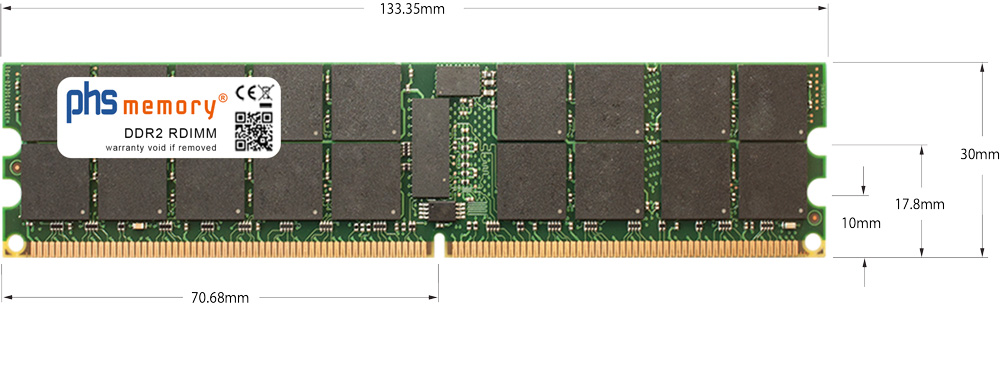What is RDIMM, what is ECC RDIMM memory
In servers, different memory technologies are used compared to PC systems to meet the higher demands for stability and capacity. Server memory is often RDIMM memory (Registered Dual Inline Memory Module), while PCs typically use UDIMM memory (=unbuffered Dual Inline Memory Module).
In unbuffered DIMM memory (UDIMM), all 64 bits of the memory bus and the lines for memory addressing are sent directly from the Northbridge, which is usually located in the CPU, in parallel to the memory.
Although RDIMM and UDIMM memory use the same memory slots and have the same pinout, they cannot be used simultaneously, as these two technologies are mutually exclusive.
In registered DIMM memory (RDIMM), the register takes over the address lines. The 72 bits (8 bits more due to the ECC functionality of RDIMM memory compared to the conventional 64-bit non-ECC UDIMM) of the memory bus are still sent in parallel from the Northbridge to the memory.
RDIMM memory also ensures that even with large memory capacities, the last bit is supplied with a stable signal over the memory bus. Special PLL ICs on the server memory are responsible for this and act as “amplifiers” on the memory module.
For safety, RDIMMs almost always come with an ECC functionality (=Error Correction Code). Using the check bits of an ECC DIMM memory, DataBit errors can be detected and corrected during operation without crashing or causing data loss. The ECC functionality is not directly related to the RDIMM technology, but it is always used in RDIMM memory to ensure the safety of the memory in the server.




Achieve maximum hard drive performance with the Samsung M.2 SSD 950 pro. In our video blog, we show you how to install the M.2 hard…
After almost two years, the long-awaited update of the Apple iMac is now on the market. If you are looking for a new Apple desktop…
All iMac 27-inch 5K models from 2017 onwards can now be expanded with up to 128GB (4x32GB) of RAM. Extensive tests have shown that the…